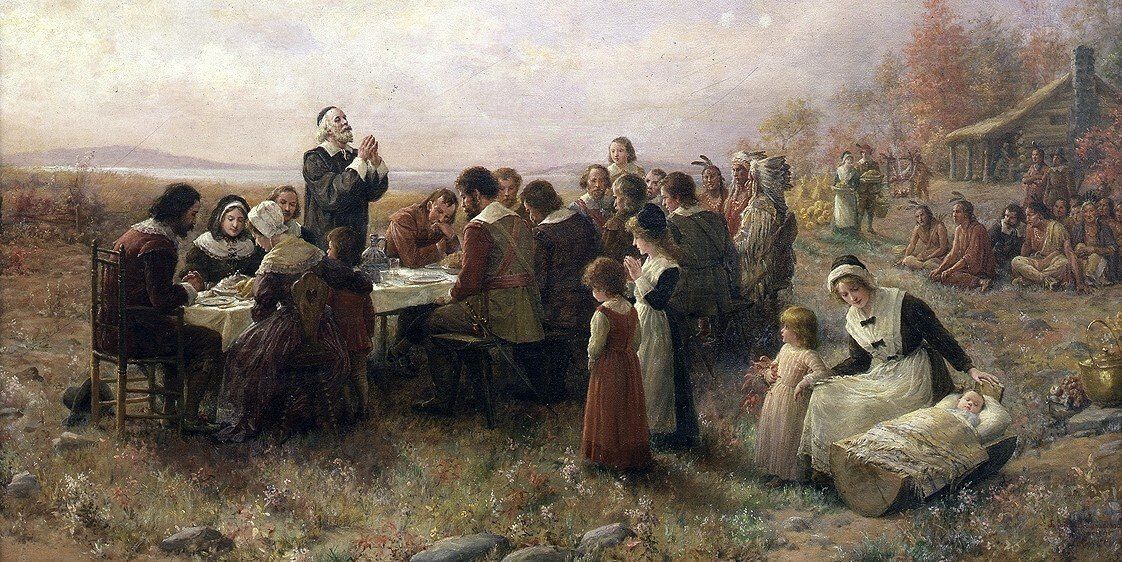America's Molech Worship, part 2: A Legalized Crime
Ryan Cox • September 22, 2021
America's Molech Worship, part 2: A Legalized Crime
“I find nothing in the language or history of the Constitution to support the Court’s judgment…in my view, its judgment is an improvident and extravagant exercise of the power of judicial review that the Constitution extends to this Court. The Court apparently values the convenience of the pregnant mother more than the continued existence and development of the life or potential life that she carries…I can in no event join the Court’s judgment because I find no constitutional warrant for imposing such an order of priorities on the people and the legislatures of the States…I cannot accept the Court’s exercise of its clear power of choice by interposing a constitutional barrier to state efforts to protect human life and by investing mothers and doctors with the constitutionally protected right to exterminate it.”¹ ~ Justice Byron White
“To reach its result, the Court necessarily has had to find within the scope of the Fourteenth Amendment a right that was apparently completely unknown to the drafters of the Amendment. As early as 1821, the first state law dealing directly with abortion was enacted by the Connecticut Legislature. By the time of the adoption of the Fourteenth Amendment in 1868, there were at least 36 laws enacted by state or territorial legislatures limiting abortion…There apparently was no question concerning the validity of this provision or of any of the other state statutes when the Fourteenth Amendment was adopted. The only conclusion possible from this history is that the drafters did not intend to have the Fourteenth Amendment withdraw from the States the power to legislate with respect to this matter.”² ~ Justice William Rehnquist
Justices Byron White and William Rehnquist were the only two Supreme Court justices to vote against the legalization of abortion in the 1973 Roe v. Wade
and Doe v. Bolton
decisions. Their dissents, as partially quoted above, contained several reasons why the Supreme Court’s ruling in favor of abortion was unconstitutional.
- It is clearly a matter left to the states to decide, not the federal government (10th Amendment of U.S. Constitution).
- The Court violated the separation of powers as it wrote new legislation breaking pregnancy into three distinct terms and then deciding what is allowed in each of those terms (Article I, Section 1 of U.S. Constitution).
- The Court was only allowed to rule on the individual case, not on behalf of all pregnant women. The Court was kept in the dark as to the particular situations of “Roe” and “Doe” since they never appeared before the Court to bring their suits (Moose Lodge v. Irvis, 407 U.S. 163; Sierra Club v. Morton, 405 U.S. 727).
- Because it was a “hypothetical lawsuit” with the plaintiffs remaining anonymous, the Court violated its practice of never formulating a rule of Constitutional law broader than is required by the precise facts to which it is to be applied (Liverpool, New York & Philadelphia S.S. Co. v. Commissioners of Emigration, 113 U.S. 33, 39).
- Since neither “Roe” nor “Doe” claimed to have any mental or physical health concerns with their pregnancies, there was no legal basis to make the claim on behalf of any other pregnant women that abortions may be necessary for the mental or physical health of a mother. For that to be done, a pregnant lady would have had to file suit claiming she needed an abortion for the sake of her mental or physical health. Therefore, “Roe” and “Doe” did not have “standing” to assert the rights of other pregnant women (United States v. Vuitch, 402 U.S. 62).
- Even if the Texas law was found to be misapplied in the case of Roe, it was to be declared unconstitutional as applied to the specific case, not to be completely struck down along with all other states’ laws ( Yick Wo v. Hopkins, 118 U.S. 356; Street v. New York, 394 U.S. 576).
- The Court’s appeal to the 4th Amendment for a “right of privacy” in this case is baseless. The law protects individuals from unwarranted search and seizures in the privacy of one’s home. The Texas law in question was the forbiddance of licensed doctors in Texas to kill unborn babies. It was not a law forbidding consenting adults to engage in consensual sexual behavior, as is often argued. It was a law forbidding medical procedures that harm a non-consenting child. The 4th Amendment, therefore, does not apply (Rehnquist’s dissent in Roe v. Wade).
- The Due Process Clause of the 14th Amendment applies to a state’s valid objectives in a law (Williamson v. Lee Optical Co., 348 U.S. 483, 491). If the suit brought before the Court was about a state law forbidding a mother from having an abortion when her physical life is in danger, then the Court could decide if the state was violating the mother’s 14th Amendment rights. However, since the case was about a mother who simply wanted to have her baby killed while in the first trimester when her life was not in jeopardy, the baby’s 14th Amendment rights were therefore violated by the Court’s ruling. Consequently, the Court completely ignored the important matter of the “compelling state interest”.
- The Court completely dismissed the Equal Protection Clause, as all individuals, whether in a womb or not, have the legally protected right to life (14th Amendment of U.S. Constitution).
- The 14th Amendment specifically does not contain a woman’s right to abortion as 36 state or territorial abortion laws were already in place up to 47 years when the 14th Amendment was drafted, proposed, and passed by these states. They all clearly passed it knowing it did not apply to abortion. It was never even argued that it could possibly pertain to abortion until 100 years later!
- Because the States had outlawed abortion for so long and were still doing so, the declared “right” to an abortion was clearly not “so rooted in the traditions and conscience of our people as to be ranked as fundamental” (Snyder v. Massachusetts, 291 U.S. 97, 105). As a result, the 9th Amendment’s protection of unenumerated (non-listed) rights does not apply. The Supreme Court even stated as much, choosing instead to try and use the 14th Amendment to defend their decision to legalize abortion and rule against the will of the American people.
Just so no one thinks it is an exaggeration to state how poorly determined and unconstitutional the Court’s ruling was, shortly after the ruling was released, Professor John Hart Ely wrote in The Yale Law Journal, “What is frightening about Roe
is that this super-protected right is not inferable from the language of the Constitution, the framers’ thinking respecting the specific problem in issue, any general value derivable from the provisions they included, or the nation’s governmental structure.”³
Professor Laurence Tribe wrote in the Harvard Law Review, “One of the most curious things about Roe
is that, behind its own verbal smokescreen, the substantive judgment on which it rests is nowhere to be found.”⁴ ⁵
Even Justice Harry Blackmun’s (one of the 7 justices who voted in favor of Roe) personal law clerk Edward Lazarus (who is very liberal and pro-abortion) wrote in 2002, “As a matter of constitutional interpretation and judicial method, Roe
borders on the indefensible. I say this as someone utterly committed to the right to choose…The problem, I believe, is that it has little connection to the Constitutional right it purportedly interpreted. A constitutional right to privacy broad enough to include abortion has no meaningful foundation in constitutional text, history, or precedent…when Democratic senators oppose a judicial appointment because of the nominee’s opposition to Roe…they practically require that a judicial nominee sign on to logic that is, at best, questionable, and at worst, disingenuous and results-oriented…The standard critique of liberal judges trumpets their willingness to substitute personal preference for legal analysis – and Roe
is universally featured as Exhibit A.”⁶
And there it is: the legalization of abortion is not founded on the Constitution, judicial precedent, or the will of the people, but rather the personal preferences of 7 immoral men who wanted to “justify” sin by making it “legal.” Henceforth, abortion has been a legalized crime against humanity and the very image of God.
Is there hope for this atrocity that plagues our nation? With Jesus, there is always hope!
End notes:
1. Justice Byron White dissenting opinion in Doe v. Bolton, http://www.usccb.org/_cs_upload/8556_1.pdf
2. Justice William Rehnquist dissenting opinion in Roe v. Wade, https://www.law.cornell.edu/supremecourt/text/410/113#writing-USSC_CR_0410_0113_ZD
3. John Hart Ely, “The Wages of Crying Wolf: A Comment on Roe v. Wade”, The Yale Law Journal, 1973, http://digitalcommons.law.yale.edu/cgi/ viewcontent.cgi?article=5116&context=fss_papers
4. Lawrence H. Tribe, “The Supreme Court 1972 Term, Forward: Toward a Model of Roles in the Due Process of Life and Law”, Harvard Law Review, 1973, http://www.jstor.org/stable/1339866?origin=crossref&seq=1#page_scan_tab_contents
5. http://www.nationalrighttolifenews.org/news/2016/01/abortion-defenders-explain-why-roe-v-wade-was-a-terrible-legal-decision-5/#.WLSsK28rJxA
6. Edward Lazarus, “The Lingering Problems with Roe v. Wade”, http://supreme.findlaw.com/legal-commentary/the-lingering-problems-with-roe-v-wade-and-why-the-recent-senate-hearings-on-michael-mcconnells-nomination-only-underlined-them.html

As many saw corruption not only in the abuse of parishioners, but also in church authority and doctrine, many started to speak out for reform. Martin Luther published his 95 Theses in 1517, and thanks to Johannes Guttenberg’s printing press, was able to print many short treatises on Biblical matters. His publications are thought to amount to ⅕ of all works printed in Germany in the first third of the 1500s. Economic historian Dr. Jared Rubin published in 2014 that “the mere presence of a printing press prior to 1500 increased the probability that a city would become Protestant in 1530 by 52.1 percentage points.” 1 Over in England, King Henry VIII desired to annul his marriage to his first of 6 wives, Catherine of Aragon. Pope Clement VII wouldn’t grant it, so King Henry established the Church of England, with him as the Supreme Head. After his and his son Edward’s deaths, his daughter from Catherine named Mary was able to take over. She reinstated the Catholic faith, although she was quite vengeful, burning at the stake more than 280 dissenters in her 5-year reign, giving her the label “Bloody Mary.” During this time, many Reformers fled to Geneva where they published in 1560 the Geneva Bible. After Mary’s death, her half-sister Elizabeth became queen and restored the Church of England. After her nearly 45-year reign, her cousin James I became king upon her death. He would commence the 1604 revision of the Book of Common Prayer and the Authorized Version of the Bible, published in 1611, known today as the King James Bible. Understandably, with all this political activity, things may not have always been on the up and up in the Church of England. Consequently, there were many reform efforts that sprung up, such as the Anabaptists, Baptists, Barrowists, Behmenists, Brownists, Diggers, Enthusiasts, Familists, Fifth Monarchists, Grindletonians, Levellers, Muggletonians, Puritans, Philadelphians, Quakers, Ranters, Sabbatarians, Seekers, and Socinians, to name a few. Robert Browne was an Anglican priest who was influenced by some Puritan theologians. He eventually rejected the idea of purifying the Church of England, and helped start a separatist church in 1581. In 1592, the Seditious Sectaries Act was passed specifically outlawing Brownists and other separatists, including imprisonment. Still, more continued to be influenced. So, in 1604, Archbishop Bancroft launched his campaign of suspending or firing some 380 Puritan and Separatist ministers, many of whom started new separatist churches, such as ministers Richard Clyfton and John Robinson in 1606. The postmaster and manager of the archbishop’s Manor House in Scrooby, William Brewster, had been impressed by Clyfton’s preaching and invited the separatists to meet in the house. Brewster eventually resigned his position, being fined for his absences at the king’s church. As the congregation grew, one enthusiastic 16-year old William Bradford began attending. An orphan since age 7, he had heard Clyfton preach at age 12. Now he was a member of this house church that grew to some 50 members, making it difficult to avoid the authorities. Bradford wrote, “But after these things they could not long continue in any peaceable condition, but were hunted & persecuted on every side… For some were taken & clapt up in prison, others had their houses beset & watched night and day, & hardly escaped their hands; and the most were fain to fly & leave their houses & habitations, and the means of their livelihood.” 2

This year we have focused on History & Destiny. As we ready ourselves for Thanksgiving, I am reminded of the history of the season and of the future to come. It is always great to celebrate this time of year and reflect back. There is so much to be thankful for, but the providence and provision of the Lord is foremost. His enduring guidance never gets old as He takes us to churches and people that need the message He has given us. This year has taken us to many places we have been to before, letting us reconnect with old friends. At the same time the Lord has opened new doors where people have been excited to hear and see Genesis in a new light with new emphasis. What a blessing to make new friends and meet co-laborers for the Gospel! God has given us connections with young and old alike, enabling the Kingdom work to continue and flourish for His praise. We are so thankful. Another year has passed and the Lord continues to provide all we need to continue this mission, including His provision of a new truck when we needed one. Yes, we still need help to pay it off, but just to be in a position to handle all that comes with purchasing a new truck is something for which we give great thanks to the Lord. To have what we need month in and month out, even when our program schedule was thin, has been a blessing worthy of great thanks. Two mornings in November we had the opportunity to teach a group of adults that many in the world forget about - those with special needs. It was a blast to talk with them about dinosaurs and, with several attendees, Biblical history. The Lord allowed us to help a blind young woman to “see” dinosaurs for her first time. All we needed to do was take her hand and let her trace the fossils with her touch. It was a truly exceptional moment to teach someone for her first time that dinosaurs are part of the Lord’s creation. We are so thankful to have been a tool in His providence and provision for those who were able to come. Our continuing mission is supported by each and every one of you who pray for us. The power of prayer is very real and we see its manifestation so often in this ministry. The financial support from family, friends and the body of Christ, His Church, carry us each and every year. We once again enter this season with extraordinary thankfulness for our Lord and for you. Thanksgiving Blessings!

